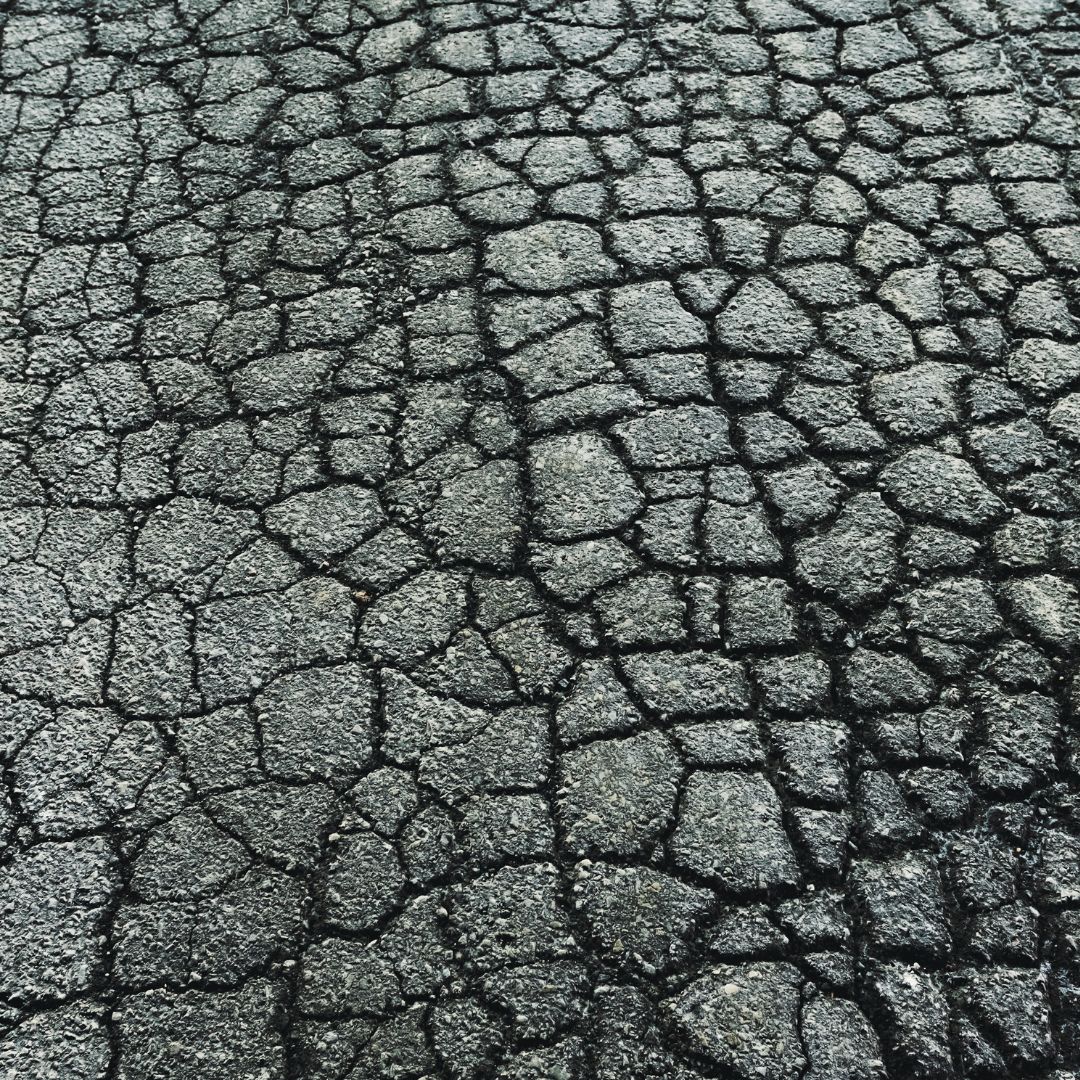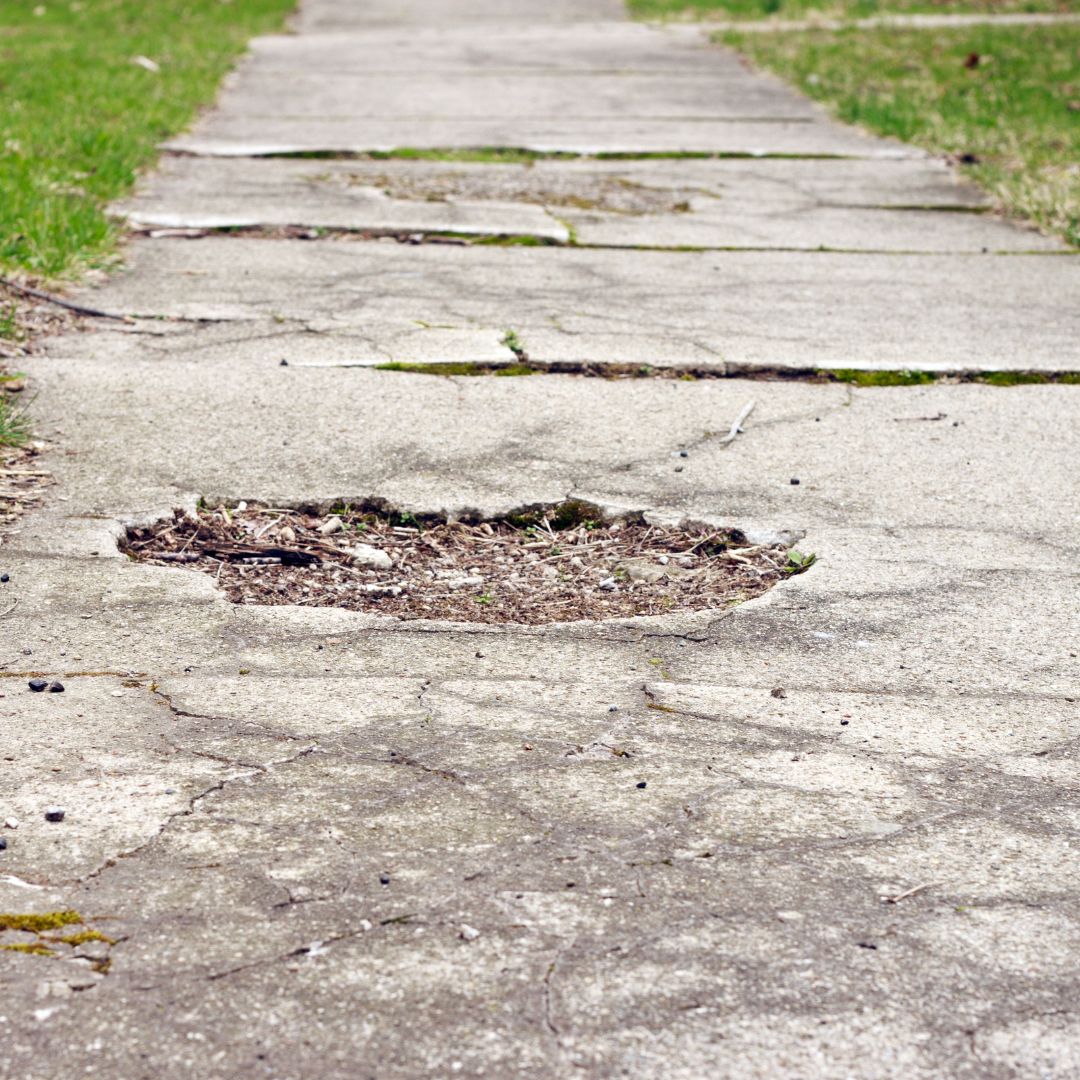
If you have trails and paths that joggers, cyclists, and moms with strollers all use, there’s a good chance it’s made of asphalt.
And it makes sense. Asphalt has plenty of benefits. It provides a smooth surface. The color allows for high-contrast markings helping manage pedestrian traffic. The flexibility of asphalt allows it to withstand freeze-thaw cycles and last longer.
In fact, when properly installed and maintained, it could last well over twenty years. Ensuring the trail gets installed properly can help prevent several issues. Staying focused on monitoring path problems can help avoid major damage.
This article will explore what asphalt is made of and how to inspect and maintain it.
What is Asphalt?
Asphalt is a mixture of processed mineral materials (aggregates) like rock, sand, or gravel. A binder holds these materials together--usually bitumen. Bitumen is a sticky, black, highly viscous liquid or semi-solid substance produced through the distillation of crude oil.
There are different types of asphalt. The most common include:
- Hot Mix Asphalt: Most commonly used roads and pavements mixture that gets applied at temperatures of about 300 - 350°F
- Warm Mix Asphalt: Similar to hot mix asphalt, but applied at temperatures between 30 to 120°F, making it easier to use in colder months.
- MC Cold Mix: Mix suitable for temporary patching until a more permanent fix becomes available.
- Dense Graded Mixes: Extra durable hot asphalt mix used for general purposes. It is highly impermeable to protect against cracks and potholes.
- Porous Asphalt: A type of pavement that allows water to drain easier used in parking lots, driveways, playgrounds, and sidewalks.
Monitoring Asphalt Paths
One of the best ways to handle asphalt problems is by catching more minor issues before they become expensive, hazardous problems. Regular visual inspections of asphalt paths allow the team to address maintenance issues promptly and complement a preventative maintenance program.
Here is a basic asphalt maintenance inspection checklist to get started:
- Coloring
- Tripping hazards
- Loose rocks
- Cracks in the asphalt
- Rutting and raveling
- Water pooling
- Potholes
- Vegetation encroaching on paths
- Weeds coming through asphalt cracks
- Faded pavement markings
- Areas with graffiti or vandalism
Asphalt Path Maintenance
Along with general trail maintenance, the following are some tasks to help make paths safer and last longer.
Sweeping
Routine sweeping or blowing of the asphalt helps improve overall appearance, reduce tripping hazards, and extend the path’s lifespan.
Sweeping can be done during inspections so the workers can ensure the path is clean while noting any cracks, potholes, or other issues.
Fixing Cracks

Addressing cracks in the asphalt largely depends on the damage you have. Generally speaking, the smaller cracks are, the more likely filling them in will prevent serious damage. If a gap gets more than ¼ inch long or wide, you may consider filling it.
Typical asphalt cracks you’ll likely encounter include:
- Fatigue/Alligator Cracking: Cracks resemble the skin of an alligator due to insufficient foundational materials, harsh weather, and poor drainage. To fix these cracks, see if you could address the issue causing the crack and then do a full-depth path-up.
- Block Cracking: Giant rectangular-shaped cracks caused by an excessively dry aggregate or freezing temperatures. Fix block cracking with a thin overlay.
- Transverse Cracking: Perpendicular cracks caused by cold weather and overuse. Smaller cracks can be fixed with sealant. Larger cracks may require a replacement with an overlay.
- Slippage Cracking: Serious crescent-shaped cracks that develop when there is too much sand in the aggregate, and it cannot bond to the other materials in the composite. This cracking needs a partial or full-depth patch.
- Edge Cracking: Appears at the edge of paved surfaces due to unstable drainage, support, or strong frost heaves. Fix this by clearing debris from the edges and filling cracks with sealant. Also, take care of any drainage issues making this problem worse.
- Reflective Cracking: When adding pavement overlay in unsecured conditions, joints open up. These cracks can allow water to get into the aggregate, causing damage. Fix reflective cracking with crack filler.
Other Surface Repairs

Cracks aren’t the only issues affecting asphalt. Rutting is a permanent indentation of the asphalt pavement surface. Rutting is common in parking lots where wheel paths are created.
Asphalt raveling is when aggregate materials get dislodged, and the asphalt surface starts to disintegrate. The path will appear rougher, and lower layers may get exposed.
Potholes usually show up due to expansion and contraction during freeze-thaw water cycles. Traffic also plays a role in forming them. Potholes present a hazard to anyone using the paths.
Repairing potholes requires cleaning dirt, debris, and loose pieces from the pothole. Then temporarily patch the path with cold mix asphalt until a permanent repair is available.
Sealcoating/Resurfacing
Sealcoating uses a liquid product that seals the asphalt surface and any small cracks. If small cracks aren’t sealed, water and air can pass through them. Over time, that leads to asphalt oxidation, hardening, and larger cracks forming.
Resurfacing asphalt adds a new layer (about 1.5 to 2 inches in depth) over a worn but structurally stable path. All existing damage needs to be repaired first. When done correctly, it can add up to another 8 to 15 years to an existing path.
Clearing Vegetation
Remove vegetation growing through cracks in the asphalt to prevent further damage. Also, plantings along the side of the trail could encroach on the path and affect users' sight distance. Trim back any vegetation or branches to prevent encroachment.
Also, invasive plants are found near disturbed natural areas like pathways. Identify any emerging invasive plants and remove them before they crowd out native plant species.
The Takeaway
Asphalt paths can be a heavy-traffic asset for your parks. Every day, people who love being outdoors take advantage of these paths in different ways.
Although flexible and durable, asphalt paths can develop issues due to age, weather, and traffic. The good news: when these issues get caught early, it helps lengthen the lifespan of the path.
Scheduling regular inspections is an excellent way to monitor the condition of asphalt paths.
More and more people are using maintenance management software to schedule inspections and preventative maintenance for their assets. Also, non-maintenance workers who notice issues can easily create a digital work order to alert the proper individuals. The improved communication saves time, and missed tasks, and helps keep assets in better shape.
